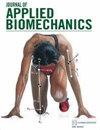Head Impact Kinematics and Brain Deformation in Paired Opposing Youth Football Players.
IF 1.1
4区 医学
Q4 ENGINEERING, BIOMEDICAL
引用次数: 2
Abstract
Head impact exposure is often quantified using peak resultant kinematics. While kinematics describes the inertial response of the brain to impact, they do not fully capture the dynamic brain response. Strain, a measure of the tissue-level response of the brain, may be a better predictor of injury. In this study, kinematic and strain metrics were compared to contact characteristics in youth football. Players on 2 opposing teams were instrumented with head impact sensors to record impact kinematics. Video was collected to identify contact scenarios involving opposing instrumented players (ie, paired contact scenarios) and code contact characteristics (eg, player role, impact location). A previously validated, high-resolution brain finite element model, the atlas-based brain model, was used to simulate head impacts and calculate strain metrics. Fifty-two paired contact scenarios (n = 105 impacts) were evaluated. Lighter players tended to have greater biomechanical metrics compared to heavier players. Impacts to the top of the helmet were associated with lower strain metrics. Overall, strain was better correlated with rotational kinematics, suggesting these metrics may be better predictors of the tissue-level brain response than linear kinematics. Understanding the effect of contact characteristics on brain strain will inform future efforts to improve sport safety.配对对抗青少年足球运动员头部碰撞运动学与脑变形。
头部撞击暴露通常用峰值合成运动学来量化。虽然运动学描述了大脑对撞击的惯性反应,但它们并没有完全捕捉到大脑的动态反应。应变是衡量大脑组织水平反应的一种指标,可能是更好的损伤预测指标。在这项研究中,运动学和应变指标与青少年足球的接触特性进行了比较。两支对立球队的球员都配备了头部撞击传感器,以记录撞击的运动学。收集视频以确定涉及对方仪器球员的接触场景(即配对接触场景)和代码接触特征(例如,球员角色,撞击位置)。先前验证的高分辨率大脑有限元模型,即基于atlas的大脑模型,用于模拟头部撞击并计算应变指标。评估了52个配对接触情景(n = 105个影响)。与较重的玩家相比,较轻的玩家往往拥有更大的生物力学指标。对头盔顶部的冲击与较低的应变指标相关。总的来说,应变与旋转运动学的相关性更好,这表明这些指标可能比线性运动学更好地预测组织水平的大脑反应。了解接触特性对脑劳损的影响将为今后提高运动安全提供信息。
本文章由计算机程序翻译,如有差异,请以英文原文为准。
求助全文
约1分钟内获得全文
求助全文
来源期刊

Journal of Applied Biomechanics
医学-工程:生物医学
CiteScore
2.00
自引率
0.00%
发文量
47
审稿时长
6-12 weeks
期刊介绍:
The mission of the Journal of Applied Biomechanics (JAB) is to disseminate the highest quality peer-reviewed studies that utilize biomechanical strategies to advance the study of human movement. Areas of interest include clinical biomechanics, gait and posture mechanics, musculoskeletal and neuromuscular biomechanics, sport mechanics, and biomechanical modeling. Studies of sport performance that explicitly generalize to broader activities, contribute substantially to fundamental understanding of human motion, or are in a sport that enjoys wide participation, are welcome. Also within the scope of JAB are studies using biomechanical strategies to investigate the structure, control, function, and state (health and disease) of animals.
 求助内容:
求助内容: 应助结果提醒方式:
应助结果提醒方式:


